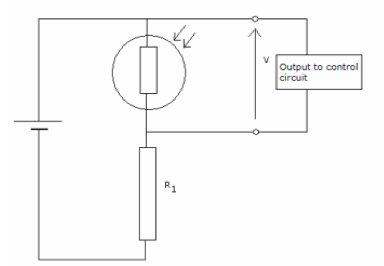Cards In This Set
| Front | Back |
|
5.1.1 Define electric potential difference.
|
Electric potential difference: work done per unit
charge to move a positive test charge between A and B.
Joule / coulomb = Volt
|
|
5.1.2 Determine the change in potential energy when a charge moves between
two points at different potentials.
|
The change in the electrical potential energy = the work done
Moving from point A (low EP) to point B (high EP)makes charge q gain electrical
potential energy
△potential energy
= F * d
= E * q * d
|
|
5.1.3 Define the electronvolt.
|
The energy acquired by an electron as it moves through a potential
difference of 1 volt.
1 eV = 1.6 x 10-19J
|
|
5.1.5 Define electric current.
|
The flow of charged particles through a material when a potential
difference is applied across it.
Rate of flow of charge
Unit: Ampere (A) I=Q/t
|
|
5.1.6 Define resistance
|
a measure of how difficult a charge can flow in a material
Unit: Ohms (Ω)R=V/I
|
|
5.1.8 State Ohm’s Law.
|
Provided that the physical conditions such as temperature are kept
constant, the resistance is constant over a wide range of applied potential
differences and therefore the potential difference is directly proportional to
the current.
potential difference α current.
Voltage = Current * Resistance
|
|
5.1.9 Compare ohmic and non-ohmic behavior.
|
In ohmic behavior, V and I are not proportional to each other.
In non-ohmic behavior, V and I are not proportional to each other.
|
|
5.1.10 Derive and apply expressions for electrical power dissipation in
resistors.
|
Electrical power is the rate that an electrical device uses energy.
P = ,E-t. =
I2R = ,,V-2.-R
|
|
5.2.1 Define electromotif force (emf).
|
The amount of energy per unit charge supplied to a circuit by a power
source.
|
|
5.2.2 Describe the concept of internal resistance.
|
When a battery supplies a current to an external circuit it gets warm. This
is due to the battery having a small internal resistance.
|
|
5.2.6 Describe a potential divider.
|
Changing the ratio of resistance
will vary the potential difference
|
|
5.2.7 Explain the use of sensors in potential divider circuits.
|
 Light stops shining on LDR Resistance increase Potential difference increase Light on! refer to image |
|
6.1.1
State
Newton’s universal law of gravitation.
|
Every
material particle in the Universe attracts every other material particle with a
force that is directly proportional to the product of the masses of the
particles and that is inversely proportional to the square of the distance
between them
|
|
6.1.2
Define
gravitational field strength.
|
the
gravitational field strength at a point is the force exerted per unit mass on a
particle of small mass placed at that point
|
|
6.1.4
Derive
an expression for gravitational field strength at the surface of a planet,
assuming that all its mass is concentrated at its centre.
|
 Refer to image |



